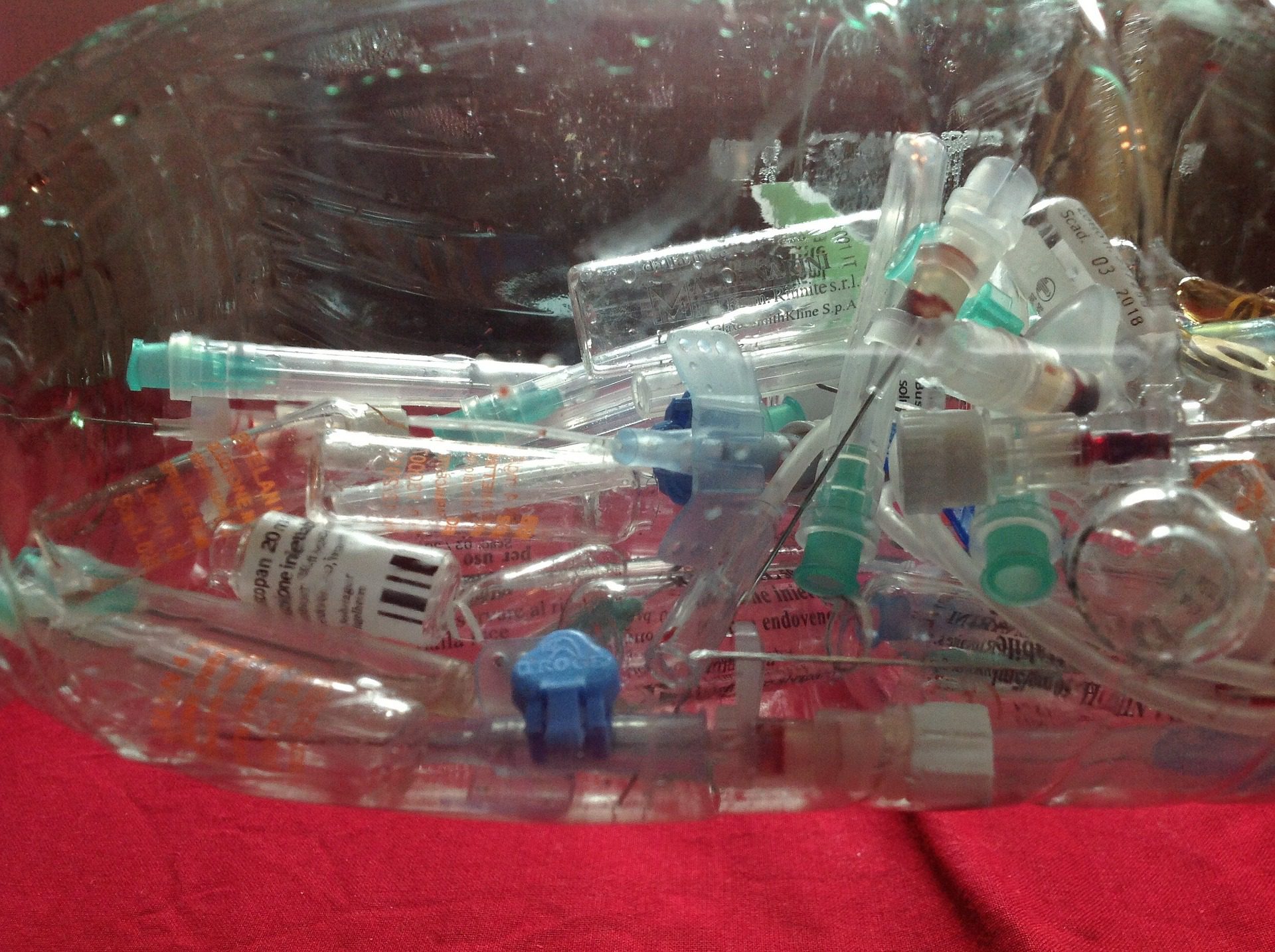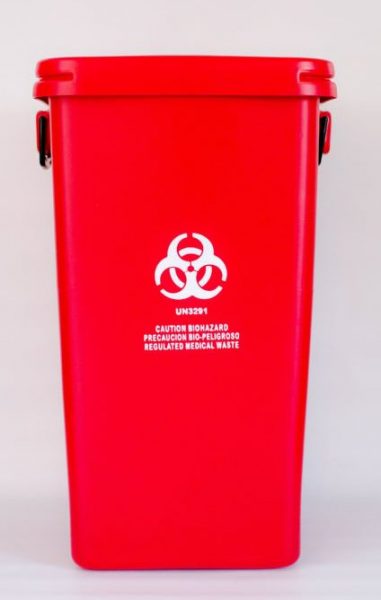Safety First: Your Guide to Accountable Medical Waste Removal Services
Safety First: Your Guide to Accountable Medical Waste Removal Services
Blog Article
Minimize Costs and Optimize Safety And Security: Effective Medical Garbage Disposal Techniques
Reliable medical waste disposal techniques are vital for health care centers to make best use of and decrease costs safety. By carrying out appropriate partition and categorization, effective packaging and labeling, safe transport and handling, reliable therapy and disposal techniques, and compliance with regulatory standards, healthcare centers can ensure the responsible and secure administration of clinical waste.

Correct Segregation and Categorization
Appropriate segregation and categorization are important parts of reliable medical waste disposal techniques, ensuring the safety and security of health care employees, the public, and the setting - medical waste removal services. medical waste disposal services with WasteX. By separating different kinds of clinical waste at the factor of generation, healthcare facilities can minimize the risk of cross-contamination and prospective harm to communities and people
Among the vital consider proper segregation is the recognition and classification of clinical waste. This involves categorizing waste right into various teams, such as contagious, harmful, contaminated, or pharmaceutical waste. Each classification calls for certain handling, storage, and disposal methods to stop any adverse effects on human health and wellness and the environment.
In addition, appropriate segregation likewise includes the use of color-coded containers and labels to plainly identify and separate the different types of clinical waste. This helps healthcare workers and waste management workers to quickly recognize and deal with the waste suitably. Red containers might be utilized for transmittable waste, while yellow containers might be designated for unsafe waste.
In enhancement to partition, proper classification also entails the appropriate product packaging and control of medical waste. This makes sure that waste is safely stored and moved without posturing any risks to individuals or the environment. Making use of watertight and puncture-resistant containers, along with properly securing and labeling them, assists to avoid any unexpected direct exposure or launch of unsafe materials.
Efficient Packaging and Labeling
Effective product packaging and labeling play a crucial role in guaranteeing the reliable and safe disposal of medical waste. Appropriate packaging is important to prevent leakage, breakage, or spillage during transport and handling. It aids to decrease the risk of contamination and shields health care employees, waste management workers, and the environment from possible dangers.
Medical waste must be packaged in strong and leak-proof containers that are immune to penetrate and breakage. These containers should be appropriately sealed to avoid any kind of leakage. Furthermore, the packaging ought to have the ability to stand up to the problems of transport, including temperature variations and rough handling.
Classifying is similarly essential as it gives crucial information concerning the materials of the waste and any possible risks related to it. The labels ought to include the name of the health care facility, the type of waste, and any type of special delivery guidelines. Standardized and clear labeling ensures that waste management employees can conveniently recognize and manage the waste properly.
Efficient product packaging and labeling also help in the appropriate segregation and classification of clinical waste. Clear labeling enables very easy recognition of different waste streams, such as transmittable waste, sharps, or pharmaceutical waste. This aids in improving the disposal procedure and making certain that the waste is dealt with or dealt with according to governing guidelines.
Safe Transport and Handling
Guaranteeing the safe transportation and handling of clinical waste is of utmost importance in order to protect against any possible health and ecological risks. Medical waste, such as sharps, contaminated materials, and pharmaceutical waste, must be effectively packaged and handled to reduce the danger of direct exposure to damaging materials and pathogens.
Delivering medical waste needs compliance with stringent regulations and standards set by regional authorities and environmental companies. These laws aim to protect the health and wellness of workers associated with waste management and prevent the launch of unsafe materials right into the setting.
To make certain secure transport, clinical waste should be positioned in puncture-resistant and watertight containers that are properly secured and labeled. Furthermore, it is essential to utilize specific cars geared up with ideal security functions to deliver clinical waste. medical waste disposal services with WasteX.
Dealing with medical waste likewise calls for correct training and adherence to safety procedures. Employees associated with the handling of medical waste should put on appropriate personal safety devices (PPE) such as dress, handwear covers, and masks to decrease the risk of direct exposure. They ought to additionally adhere to rigorous hygiene techniques to stop the spread of infections and guarantee the risk-free disposal of waste.
Efficient Treatment and Disposal Techniques
Executing ideal therapy and disposal methods is crucial in handling clinical waste effectively and minimizing potential health and Check Out Your URL wellness and environmental risks. Medical waste, which consists of sharps, contagious materials, chemicals, and drugs, can posture substantial risks otherwise dealt with and thrown away properly. There are a number of treatment and disposal approaches offered that abide by regulatory standards and advertise risk-free techniques.
One common method is incineration, which entails burning the waste at high temperature levels. Incineration works in destroying virus and minimizing the volume of waste, but it can launch damaging toxins right into the air otherwise properly controlled. It is important to make use of modern-day incinerators furnished with discharge control modern technologies.
Another technique is autoclaving, which makes use of vapor and pressure to decontaminate the waste. Autoclaving works in eliminating pathogens and minimizing the quantity of waste, yet it requires cautious monitoring and maintenance to ensure appropriate functioning. The sanitized waste can after that be safely disposed of in a landfill.
Chemical therapy is one more option, which includes utilizing disinfectants or various other chemicals to counteract virus. This technique is generally used for liquid waste, such as research laboratory samplings. Nevertheless, it is very important to utilize ideal chemicals and follow appropriate treatments to guarantee efficient treatment and avoid environmental contamination.

Conformity With Regulatory Guidelines
Abiding by regulatory standards is vital in guaranteeing correct compliance with clinical waste disposal techniques. These standards are implemented to protect public health, avoid ecological contamination, and keep work environment safety and security. Conformity with governing guidelines is crucial for health care centers, as non-compliance can result in fines, penalties, and reputational damage.
Regulatory standards lay out the appropriate handling, storage, transportation, and disposal of medical waste. They give certain instructions on product packaging needs, labeling, and record-keeping. These guidelines additionally attend to the partition of various waste streams, such as sharps, infectious waste, and pharmaceutical waste. Healthcare centers should guarantee that their waste monitoring techniques line up with these guidelines to minimize the danger of direct exposure to harmful products and stop the spread of infections.
To maintain compliance, health care facilities need to develop extensive waste administration programs that consist of team training, routine audits, and recurring surveillance. It is necessary to keep up-to-date with any type of changes or updates to regulative guidelines, as methods may develop over time. By remaining informed and executing appropriate procedures, medical care facilities can decrease the possibility for governing violations and shield the health and wellness of their personnel, individuals, and the surrounding community.
Verdict
Finally, carrying out effective medical waste disposal strategies is vital for optimizing and minimizing costs security. Proper segregation and classification, reliable product packaging and labeling, secure transport and handling, and efficient treatment and disposal methods are crucial steps to ensure conformity with governing standards. medical waste removal services. By sticking to these methods, health care facilities can safeguard the setting and public wellness while also decreasing economic concerns connected with clinical waste administration
By applying proper partition and classification, effective product packaging and labeling, risk-free transport and handling, reliable treatment and disposal techniques, and compliance with regulative standards, healthcare facilities can make certain the responsible and risk-free administration of clinical waste. Red visit this page containers might be made use of for transmittable waste, while yellow containers might be designated for unsafe waste.
Standard and clear labeling makes certain that waste administration workers can quickly recognize and manage the waste suitably. (medical waste disposal services with WasteX)
Clear labeling enables for simple identification of different waste streams, such as infectious waste, sharps, or pharmaceutical waste. These guidelines see post likewise address the partition of various waste streams, such as sharps, infectious waste, and pharmaceutical waste.
Report this page